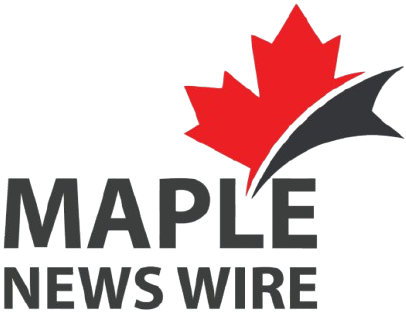Mark Carney tells Trump Canada is “not for sale” as leaders discuss tariffs, trade, and sovereignty in high-stakes White House meeting.
Carney and Trump’s First White House Meeting: A Defining Moment
Canadian Prime Minister Mark Carney’s inaugural visit to the White House on May 6, 2025, set the tone for a new-and at times tense-chapter in U.S.-Canada relations. Meeting President Donald Trump in the Oval Office, Carney faced off against a leader known for his tough rhetoric and unpredictable style, particularly regarding tariffs and the idea of Canada becoming the 51st U.S. state.
A Cordial Start Masks Deep Divides
Despite the underlying friction, the meeting began with public gestures of respect. Trump praised Carney as “a very talented person,” while Carney acknowledged Trump’s “transformational” impact on global politics.
Both leaders exchanged compliments, but the warmth was quickly tested as the conversation turned to the core issues straining the relationship.
The 51st State Debate: Carney’s Unyielding Stand
President Trump, true to form, floated the idea of Canada joining the United States, calling it a potential “wonderful marriage.” Carney, however, responded with a calm but resolute message: “Canada is not for sale. It won’t be for sale, ever.” Trump, undeterred, replied with his trademark, “Never say never”.
Carney’s stance was more than symbolic. He was elected on a wave of anti-Trump sentiment, fueled by Canadian outrage over U.S. tariffs and repeated suggestions of annexation.
During the meeting, he made it clear that Canadian sovereignty was non-negotiable, drawing a line that resonated with voters back home.
Tariffs and Trade: No Immediate Breakthrough
Tariffs were the most contentious issue on the table. Trump’s administration had imposed sweeping tariffs on Canadian goods, including steel, aluminum, and autos, arguing that they were necessary to protect U.S. industries.
Carney, in turn, pressed for their removal, labeling them illogical and damaging to both economies.
When asked if Carney could persuade him to lift the tariffs, Trump was blunt: “No, it’s just the way it is.” He insisted that the U.S. could thrive without Canadian imports, a claim Carney quickly rebutted by highlighting that Canada is the largest client for U.S. goods and that the two economies are deeply intertwined.
“Fifty percent of a car that comes from Canada is American. That’s not like anywhere else in the world,” Carney pointed out, fact-checking Trump’s assertions on trade.
Election Aftershocks: Canadian Voters Back Carney’s Tough Approach
The timing of the meeting was significant. Carney’s Liberal Party had just secured a fourth consecutive election win, partly by promising to stand up to Trump’s aggressive policies.
A recent poll showed that 24% of Canadians viewed the deteriorating U.S.-Canada relationship as a major election issue, with more voters trusting Carney to handle Trump than any other candidate.
Carney’s clear rejection of annexation and his commitment to renegotiating trade terms reflected the mandate he received from Canadian voters. His approach contrasted with Trump’s more transactional style, setting the stage for a series of complex negotiations in the months ahead.
Diplomacy and Tension: The New Normal
While the meeting avoided the outright hostility seen in some of Trump’s previous encounters with world leaders, it was far from a diplomatic breakthrough. Trump’s style-shifting from praise to provocation and digressing into unrelated topics-kept Carney and his team on their toes.
At one point, Trump even claimed, without evidence, that the U.S. was subsidizing Canada by $200 billion per year, a statement Carney did not let go unchallenged.
Despite the tension, both leaders agreed to continue talks. Carney described the meeting as “productive,” emphasizing that further negotiations on trade and security would follow, including a planned meeting at the upcoming G7 summit.
Market Reaction: A Vote of Confidence in Carney
The immediate aftermath saw the Canadian dollar surge to its highest level against the U.S. dollar in nearly seven months, as investors welcomed Carney’s steady hand and the prospect of renewed dialogue.
Canadian officials, relieved that the meeting avoided open conflict, rated the encounter as a “10 out of 10,” signaling cautious optimism about the path ahead.
Looking Forward: What’s Next for U.S.-Canada Relations?
The Carney-Trump meeting marked the beginning of a new era, defined by firmer Canadian resolve and ongoing U.S. unpredictability.
Key issues remain unresolved:
Tariffs: Trump remains committed to protectionist measures, while Carney vows to keep pushing for their removal.
Sovereignty: Carney’s categorical rejection of annexation sets a clear boundary for future talks.
Trade Renegotiation: Both sides agreed on the need to revisit the States-Mico-Agreement (MCA), but details remain uncertain.
As Carney prepares for further discussions at the G7 and beyond, the world will watch how these two leaders navigate one of the most important bilateral relationships in the Western Hemisphere.
“Some places are never for sale. Canada is one of them. And it won’t be for sale, ever.” – Mark Carney to Donald Trump
Conclusion
Mark Carney’s debut at the White House was a test of leadership under pressure. By standing firm on Canadian sovereignty and trade, he delivered a message that resonated at home and abroad: Canada’s future will not be dictated by outside forces, no matter how powerful. The next chapters in U.S.-Canada relations promise to be just as closely watched-and just as consequential.




